The enjoyment I get from photography can essentially be split into two parts.
About 75% is the experience of exploring somewhere out in the countryside with a camera. The other 25% is having the final result, or image.
This proportion does fluctuate, for example more than once I’ve shot a whole roll of film only to realise the leader hadn’t caught properly and not a single frame had been captured.
The lack of any final photos did not diminish the experience I had of finding, framing and capturing (at least in my mind) the 24 images.
On those occasions the enjoyment came down to 100% experience, 0% result.
Because the result is at best 25% of the overall purpose of photography, once the experience part is over, I’m keen to get that final image with as little fuss as possible.
Which is why my feelings toward post processing veer between indifference and loathing.
Since discovering the fabulous little Ricohs, I’ve been looking at ways to reduce post processing time.
I’m at a point now where if I shoot RAW, I have a standard (b/w) preset I apply in LightRoom to get the images roughly how I want them to look, with only minor further tweaking needed here and there.
But with this I still end up with a set of RAW files, a set of out of camera JPEGs and a set of LightRoom exported JPEGs, which was all a bit messy and takes more time organising on my MacBook – and accessing when I want to share them afterwards.
So I then evolved the process into using JPEGs only (not RAW+JPEG), set to b/w in camera, with the contrast boosted a little and the exposure compensation down a little to help avoid blown highlights.
Using this, I then only need a very subtle preset in LightRoom to notch up the contrast a fraction, then I adjust the exposure if needed too.
Pleasingly, this process probably now takes about 20 seconds per photograph.
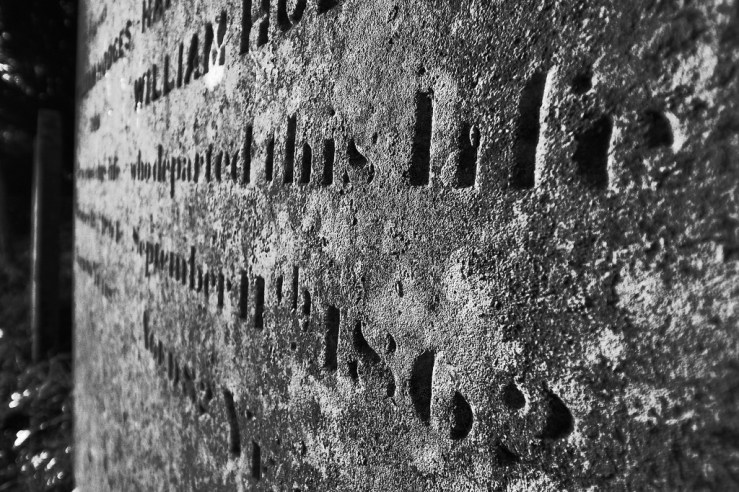
I wondered though if I could streamline it further still, and have zero processing, yet still get images I’m really happy with.
I could just use the in camera b/w JPEGs as above and do nothing more, but that extra nudge of the contrast and/or exposure in LightRoom still makes it worth it for the “improvement” of the final image.
Then I remembered the “High Contrast B&W” (let’s called it HCBW) scene mode in the Ricoh GRD III.
Now usually I avoid any kind of scene modes on digital cameras, as they rarely give natural enough looking photos (ending up looking far too digital and sterile) plus don’t allow enough control over anything else. So one aspect or other (ISO, aperture, shutter speed, contrast etc) always seems to be wrong, with no way of changing it after the image is made.
But this being a Ricoh camera, you can keep all the other settings intact and under your control, plus within the HCBW scene you can also adjust the level of contrast (MAX, -1, -2) and vignetting (Off, Weak, Strong).
Plus you can tell the camera to also capture a standard JPEG of the scene simultaneously, should you wish to have a colour version to edit afterwards too. Also being a Ricoh, once you have all this set, you can save it to one of the “MY” modes on the dial. Let joy be unconfined!
So this is what I did, set the contrast to -1, vignetting off, and all my other settings to my normal preferences I’ve found work best for me with the GRD III.
Then I went out shooting this morning using the HCBW mode only, to see how the photographs would come out.
The result is I’m more than happy with them. All of the images in this post are from this photowalk.
I still have the option of shooting the standard b/w mode JPEGs if/when I want to, and the full RAW & JPEG option too.
But for the foreseeable future, using the HCBW mode as I’ve now set it up seems like a very enticing option to give me very pleasing (to me) photographs with zero processing.
The major benefit being an even greater proportion of my overall photography time will now be spent out shooting photographs, not hunched over my MacBook applying and tweaking presets to them afterwards, and organising multiple versions of each image.
How much time do you spend processing your photographs (which includes developing, with film photography), and how much do you enjoy it?
Please let us know in the comments below (oh and be sure to tick “Notify me of new comments via email” box to follow the conversation).
Thanks for reading. Please share this post with others you feel will enjoy it too.

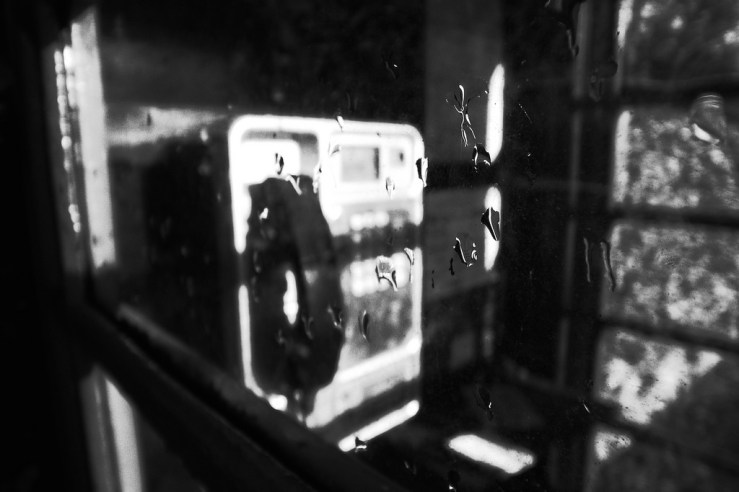
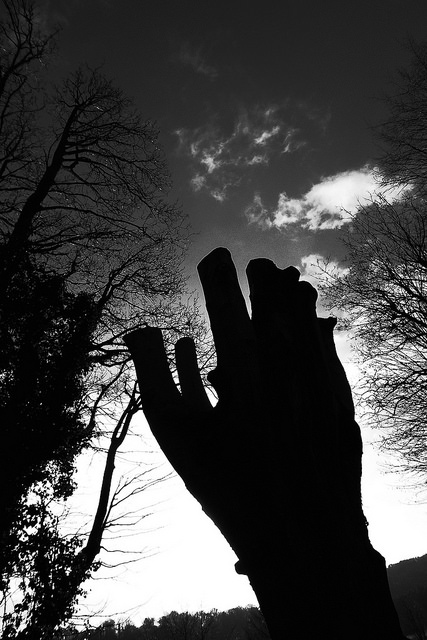
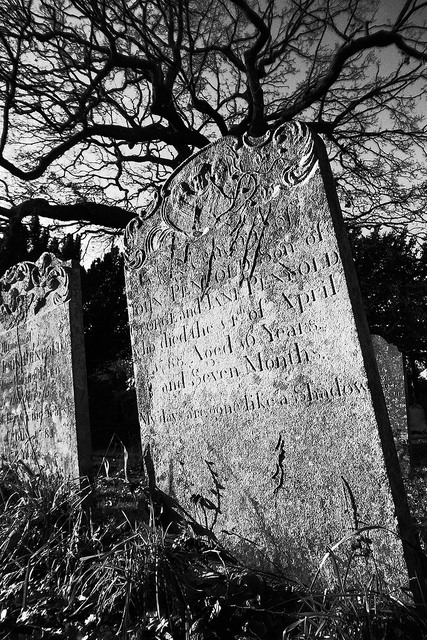
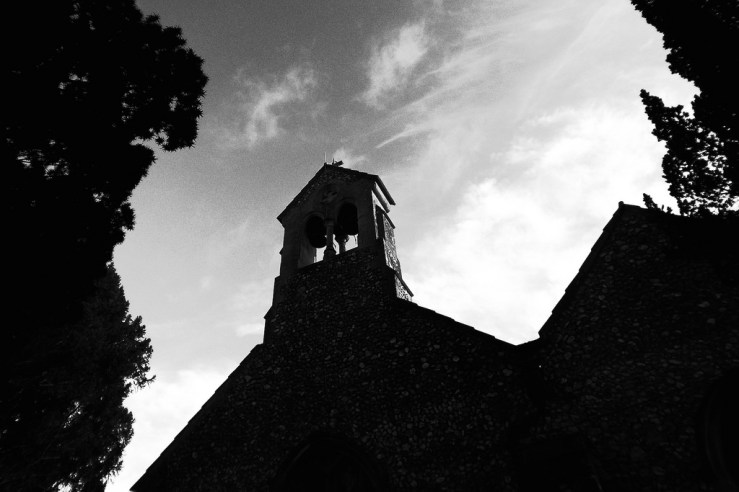

It’s funny, I actually really enjoy the processing (Both digital and Film). I do everything I can to get rid of the camera preset, even if set by me, so that I have as neutral an image as possible before I start.
I guess for me, I see it as a way of being able to assert my own vision on the scene. Whether that be taking creative liberties with colour, contrast or keeping it as realistic as possible.
Nice thought provoking article.
Alex
Hi Alex, thanks for your comments. Interesting the different ways people see it. What I’m curious about with your approach is if you’re setting everything as neutral as possible (with digital, and I assume shooting RAW) does it matter what camera you use? What then determines your choice of camera?
I like processing my photos. What I don’t like is the time it takes away from me, time I might spend doing things I value more. And so as much as possible I want to get it right in the camera.
My Canon S95 needs certain corrections every time, to varying degrees. Its in-camera distortion correction doesn’t go far enough. (That really makes me nuts. How hard would it have been for Canon to have gotten that programming right in the camera, if Photoshop can instantly fix it the rest of the way based on lens profiles?) It tends toward dark shadows; a little tweaking brings out detail. And I often need to boost color, as the Canon color profile is a little muted.
None of these things is hard. The automatic corrections in the RAW editor are good enough 90% of the time. But that means I’m spending 1-2 minutes on each image. On a road trip, I can easily shoot 300 images! That means I spend *5 to 10 hours* processing photos when I get home. Holy *crap* is that a lot of time. Too much.
I am seeing through my work with the K10D that, for the documentary work I do, there is simply no substitute for a competent compact digital camera. Except for the post-processing I must do, the Canon S95 is a fabulous tool. I think I will always have a camera like it. But when the S95 dies, I will replace it with something where, as much as humanly possible, I can use the JPEGs straight from the camera.
You’ve summed it up exactly Jim, there are a bunch of things I’d rather be doing than tweaking photos.
Plus yes the numbers can be intimidating. I know in the past the thought of having to process every shot, even when I’ve taken only 40 or 50, has inhibited me shooting more. If I know my PP is a matter of seconds per photo, it doesn’t bother me to take say 100 photos in a couple of hours.
With the K10D for colour work I also do virtually zero processing, but I still shoot RAW and export in LightRoom. Whatever the default neutral settings are in LR seem to work very well for me using the K10D with vintage lenses. But in actually using it, it takes a lot more work per shot compared with a digital compact (mostly to get the exposure right) and a lot of the time there’s no point for my needs in using the DSLR and having that extra work.
For colour shots you could a lot worse than use that impressive “old” Kodak digital compact of yours!
A future plan of mine is to play with the “cross process” scene mode on the GRD III which can also be adjusted a fair bit in camera (hue, contrast and vignetting), to see if I can similarly pleasing “straight out of camera” colour work. The dabbling I’ve done so far has been promising.
It would be good to get a very muted colour look, then keep the K10D for the natural vibrant colours in the summer.
Glad to see that you made it work your way just out of the camera. Over the past weeks (or months), your Ricoh pictures were getting more and more … wow, I like this look … IMHO 😉
For me, I usually apply a default preset in my preferred photo application – one for colour and another one for b&w. As these preset can be applied by batch, this does not take too much time. I try to avoid playing around too long with single images.
For the last weeks however, I tried some different presets with my b&w pictures and I’m still struggling to automate this process 😉
Thanks Reinhold, appreciate your comments!
Yes I figured out too for when I shoot RAW or even JPEG that I know will need further tweaking I can apply a basic preset across the whole batch then only need make very minor adjustments here and there to individual photos.
I don’t use it myself but a lot of people rave about Silver Efex for b/w photos which is now owned by Google and free to use – https://www.google.com/nikcollection/products/silver-efex-pro/
I don’t know how much you can save your favourites and make it very automated by I expect once you find a look/preset you like it can then be used as a starting point for all future image processing.
thank you for this info. i love to see another results from the Ricoh GR digital – its in my watchlist for the next purchase as additional to the everyday FF 5dmkll camera. i use the only Lightroom to catalog my images and for the editing process which is simple and very short – more time take to select and write the tags to images. so 5-15 seconds for one image is the usual time i spent on them.
i never use any preset in camera and shoot only in color, i prefer to not interfere the RAW creating process but do most as i can with an optic. also dont use presets in LR.
hope this help 😉
Hi Victor, thanks for your thoughts. Do you find every image needs different adjustments in LightRoom, or by editing do you mean just sorting through your photos and deciding which to keep and which to delete? Just wondered why you didn’t set up a preset then applied it to all images as a starting point.
I’ve dabbled a bit with colour with the Ricohs but have found it very difficult. They just seem to make a lot more sense to me as b/w cameras.
Just wanted to clarify that I have the GR Digital III. Think the models went in this order – GR Digital, GR Digital II, GR Digital III, GR Digital IV, the then APS-C cameras called GR and GR II.
The GR is on my wish list but the one I have is the far less expensive (now, but not when it was new!) GR Digital III. Which is in itself absolutely fantastic!
hi Dan. exactly. every image need its peronal touch and adjustments. presents are good for some massive work in the same place, with the same light and tones of color. sometimes i copy my ready settings from image to image but again never presets.
yes i talk about GR ii. the reason why i still dont have it – the lack of viewfinder. 😉
Strangely enough Victor I’ve been lookin at a viewfinder for the GRD III. Ricoh made one with frame lines for 28mm and the 21mm of the wide angle lens. It seems to be very well regarded and I’m curious to know what it feel like using the camera with a VF instead of the screen.
As you know, for me scanning my film takes a lot of time, though since I started using Silverfast this has declined to about a minute per negative. This software, with the correct setting for the specific film gives me good results. As I scan ALL the frames (silly habit, I know) this takes time….
Strangely I am often disappointed with the scans until I load them into my editing software, then I begin to see the possibilities. When I used Lightroom I applied sometimes a preset, sometimes I fiddle manually with the photo until it looks right. No more than one or two minutes per frame though.
I found that when I shoot colour film I process much less… Normally I am happy with the look Silverfast gives me. Black and White is much more personal and needs more work to get it just right, as I found.
Anyways, this whole process takes one or two hours per film…. a long time lost to photography I know.
Still can’t decide to switch to digital though 😉
Frank, thanks for your input.
The whole topic of film processing I find quite strange, and the more I’ve thought about it, the stranger it’s become.
When I was shooting a lot of film (after getting frustrated with home scanning and the time it took) I was just having it processed and scanned to CD. The results from a supermarket lab with Fuji equipment was fine for my needs. I didn’t ever process any further afterwards, except the times I would shoot a colour film with the intention of desaturating afterwards, as a more convenient and affordable alternative to shooting “proper” b/w film. Then I’d literally slide all the colour saturation down to zero and save it.
I was happy to accept the results that any combination of camera, lens, film, processing and scanning produced, and saw it as one of the charms of shooting film – that slight surprise and unpredictability, especially with combos I’d not tried before, expired film, redscale, cross-processed etc.
It’s quite odd to read about people shooting film, then having the negs scanned to produce a digital image, then processing them further (via digital means) to get the final image they like. Is it still film at this point? Or just another (perfectly legitimate and enjoyable) route to getting a digital photograph you like the look of and enjoyed making?
This became one of a number of reasons I’ve increasingly drifted back to digital. If I was really into film, home developing and making prints, then digital couldn’t offer any comparable alternative to the process and final image (ie physical print).
But I wasn’t into the old chemical (as opposed to digital) process of making an image to that degree. So on this front (and as I said a number of others) using a digital camera and ending up also with digital images was not very different in the end. Plus the convenience and immediacy and cheaper cost etc.
I think one of the best things about having a blog is seeing how your own preferences evolve, and hearing about how other people make their photographs along the way. Ok maybe that’s two of the best things…
I can’t really pinpoint why digital still seems wrong to me. It has all the imaginable advantages over film. Is it the feel of the cameras? The look of the results (I really think even a scan from a negative retains some of the character of film).
Why don’t I go 100% film and wet print? I tried it, the results were really encouraging as I reported. But it’s simply too time consuming and takes a lot of space if I don’t want to take over the bathroom Wachovia time I want to wet print.
Perhaps I haven’t found my ideal digital camera, one as solid feeling and simple as a film camera? And no, can’t afford even a used digital Leica… 😉
….of course I don’t take over the bathroom Wachovia!!!! Silly spell corrector!
Frank, if the main reason you shoot film is the feel and experience of old film camera, I don’t believe that can be fully replicated by digital. Yes maybe if you were used to say one of the last 35mm film SLRs, and then progressed to a same brand DSLR, it wouldn’t be a big leap to make. But obviously older and more unique film cameras are further in age and experience from any digital camera, and the experience gap widens.
If you’re happy with what you’re doing, shoot on!
If you liked the Ricoh GR film bodies (aside from them breaking down!), then I don’t think the GR Digitals (especially the original 8MP one) are much of a step either in feel, or in the final image. The handling and user interface is fantastic – you know I’m a fan already of course. And for me the results, even virtually straight out of camera JPEGs in b/w at least, aren’t anything like the kind of clinical and sterile and “perfect” digital images I dislike.
By the way, maybe you should working for some kind of Secret Service, if you can get into the bathrooms of a major financial services company and use their bathroom for film developing without them name. Maybe you need to pick up one or two of those Minox spy cameras in preparation! : )
https://www.shutterbug.com/content/minox-closer-look-every-spys-favorite-camera
Oh I think I just realised why you don’t use digital (more often). You’d have to change the name of your blog and URL entirely! : )
Bloody spellchecker did it’s ugly part there! But how he transformed ‘every’ into ‘Wachovia’ is beyond me…
Those old Ricohs are tempting! But I have been burned before…
And yes, right about the blog name. Guess I’m hopelessly stuck with film! 😉
I don’t know what device you’re using but some seemed pre-programmed with a whole slew of brand names… I wonder if these brands are paying behind the scenes to have their name in the iOS or Android dictionaries by default with the intent of surreptitiously invading the minds of consumers when we’re not expecting it …
On the Ricoh front, I recently got a CX-1, which isn’t quite as stunning as the GR Digital in handling or lens, but the menus are very very similar, the handling is still good, the screen is fab, and it makes very impressive (to me!) images. Plus it only cost me £20, so I wouldn’t be distraught if it broke after a few months.
But yes I would be rather more upset if I’d spent £100+ on a digital camera and it met an untimely death.
You at least in theory have better odds the newer you go – the GR film cameras were only made up to about 1997 I think, so although it’s still a film camera, there’s a lot of electronics in there that are now 20 years old. And they still go for £££s!
With a digital from say 2010/11, you would hopefully have a few more years in it yet, even if you paid £100-200.
I’m sure some of our film cameras will be working flawlessly 5, 10, 25 years from now…
I’m in with the ‘like to process’ crowd. I like to sit in front of the TV, puttering my way through my images. There’s something really nice about an picture blossoming into its potential as I tweak the exposure or bring up the shadows or whatever.
The main reason I like film is because I like the separation in space and time it forces between taking a picture and experiencing it. I don’t feel like, for me, there’s any contradiction in having digital elements in the process towards the final image.
I suspect I’m taking a lot fewer exposures than some, though. I could comfortably go on a week’s walking holiday with three rolls of 36 exposure film.
Steven, a number of interesting points.
Yes I know for many that time delay with film is as much a benefit as the instantaneous feedback of digital is to others.
I know when I’ve not had a film processed for a couple of months, then do get it back, the images I thought might have been the best at the time of taking, aren’t necessarily my favourites after I’ve had that period of detachment from them. I think this can be very valuable in how objective we can be about editing our own photos. I know some people leave it months, even years to increase that detachment.
Re the digital scans, yes the bottom line is if we want to share our photos online there is no alternative but to make a digital copy at some point. You could then argue it’s open to further digital manipulation as already it’s not the same image as the negative. Personally I like(d) to make that digital aspect as minimal as possible, to preserve the characteristics of the particular camera/lens/film combo used.
With digital the choice of camera seems far less critical, in terms of the final image. As long as you have the things you can’t change in place (ISO, aperture therefore depth of field, shutter speed therefore degree of motion of blur, composition, focus, exposure (to a degree)) then the more aesthetic aspects of the image can be infinitely altered afterwards.
With film though, as I said, I tried to get to know how certain combos of camera/lens/film behaved, and let their personality come through, without altering the final image.
In theory though any photograph once made digital is equally editable. I think it comes down to personal preferences. Which is why conversations like this are interesting!
My thoughts on the amount or shooting oscillate, depending on equipment. With a film camera, lens and film I know, I will shoot far fewer exposures, especially with the latitude of film where I can be confident the exposure will be ok.
With digital, say my K10D, I’m more likely to shoot two or three exposures for each composition because the camera (and digital generally) is far more picky about getting the correct exposure.
Also of course it depends where you’re going and how photogenic it is. Sometimes I might walk an hour and take a handful of pictures, other times I’ll shoot a whole roll of film or 50 or even 100 digital shots in one place, like a churchyard.
I think there’s probably value in writing a post about this, how prolifically we shoot and the influencing factors and seeing how it varies with others…
Thanks for your thoughts.
All a question of limitation with film. Limit your gear, limit the possibilities you have (film simulations, exposure modes…) and limit the number of shots you can take. It’s possible with digital too!
I totally agree on not wanting to disrupt the quality of the lens and film through post processing. I have some not-strictly-enforced personal rules to try to stick to this: no presets that I don’t properly understand, try to stick to manipulations that have a darkroom equivalent as far as possible. That said, I have a lab develop and scan my film, so I’m aware that what I get back from them is not some pure, ideal image, but the product of decisions at their end. So I try not to be too hidebound about it.
I’d love to read your thoughts on how much you shoot.
Thanks.
Steven, I’ll have an upcoming post on my site about the number of photos I make….
Steven, I had the realisation after a while of shooting film that whilst I thought I was applying zero processing by having a lab do it, of course their equipment, and their operator were both applying their own adjustments to optimise the images in the way they thought best. The only way to have complete control from start to finish is to shoot, develop and print yourself. Which I think I mentioned isn’t something that appeals at this point.
I have a post in draft about how often I shoot and how and why it varies – Steven and Frank it will be interesting to compare notes!
Well said for the separation in space and time for film! One of the main attractions film has for me too. As for the limited number of shots I can say you’re totally right. I remember when I was young I went on 3 week holidays with my Nikon F and 6 rolls of Kodachrome 64… well enough for me!
Yes, a limited number of rolls can be really focussing. Limitations again!
Frank, yes absolutely agree about applying limitations. I think this is a huge factor in staying creative and evolving. Too much choice is overwhelming.
[…] With the Ricohs I’ve been using most lately (especially the GRD III), I now usually shoot JPEG (again), and have a very minimal processing workflow in LightRoom that adds a little contrast, might tweak the exposure, then exports. I’m pretty happy with this, and feel that zero processing is within reach. […]
[…] we talked about the “impossible dream” of zero processing – making photographs almost entirely in camera without then spending as much time (or more) […]
[…] of making colour photos that I like (even during my predominantly b/w season), and with as close to zero processing as […]
[…] recent explorations into zero processing, and a move away from LightRoom to Hipstamatic have been significant steps, and I’m only just […]
[…] How close to zero processing? […]
[…] to give a lot more punch and bite to the images. Initial impressions suggest I might get away with no further processing, something I can’t quite do even with the Ricoh. The images in this post all are straight out […]
[…] I’ve been honing ever closer to zero, and with the Pentax Q I might just have reached […]
[…] have evolved, and I’m moving ever closer to concepts like invisible cameras, zero processing and irreversible […]
[…] Nine shots out of 10 I just compose, focus and shoot. Plus I can use the JPEGs straight out of camera, requiring zero processing. […]
[…] or 53), to setting up the camera so the images captured are virtually irreversible, and require zero processing, these restrictions have all enhanced my photography […]
[…] I plan to stick with additive editing for a few weeks and see how it goes. I like the “don’t flinch and don’t look back” ruthlessness of it. Anything that lessens my computer time is an advantage too, so this method of editing fits in beautifully with zero processing. […]
[…] of simplicity I’ve been exploring through invisible cameras, irreversible photography and zero processing extending further towards its natural vanishing […]
[…] steady progress towards invisible cameras, zero processing and irreversible photography means that for the last seven or eight months I’ve only used […]
[…] digital photos though, whilst I try to do as close to zero processing as possible, I still see the images as fair game for any kind of digital […]
[…] some ways this was the zero processing holy grail for […]
[…] Yep, zero processing! […]
[…] talked at length before about simplifying the photography practice by pursuing a zero processing workflow and finding cameras that are so instinctive to use they’re close to […]
[…] zero processing dream has finally […]
[…] of higher contrast and dare I say slightly film like b/w images I favour, straight out of camera. Zero processing is […]